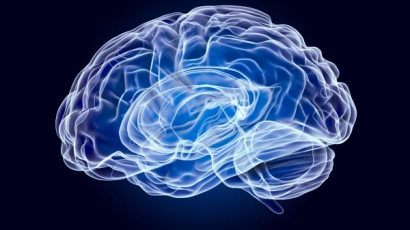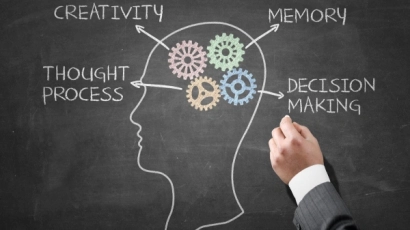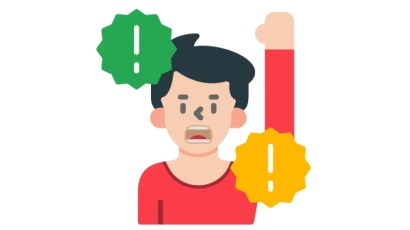Parents, are you feeling slightly lost with the amount of information available for ADHD and autism?
In recent years, experts have made great strides in discovering more about neurodevelopmental disorders. And it’s exciting! But it can also be scary with so much new, overwhelming information. It’s hard to figure out where to start, or how to differentiate between fact and myth.
We get it.
Both can have pretty similar symptoms. However, there are a few key differences that we should take note of as well. Ultimately, ADHD and autism are two different neurodevelopmental disorders, although they can have overlapping components. We’re going to break this down for you in this simple, no-nonsense article.
Okay, But What Is ADHD And Autism Exactly?

We’re glad you asked! ONE Intervention has actually gone into great detail about each of these neurodevelopmental disorders in our previous articles. Read this one for the run-down about what ADHD is, its causes, symptoms and treatment. Or check out this one for a comprehensive guide to autism.
Oh, what’s that? You’re in a rush? Alright, here’s the really quick summary.
ADHD and autism are both neurodevelopmental disorders.
ADHD stands for Attention Deficit Hyperactivity Disorder, and is characterised by impulsiveness. There are 3 presentations of ADHD: Extreme hyperactiveness, extreme inattentiveness, or any combination of the two.
Autism, also known as Autism Spectrum Disorder (ASD), is characterised by repetitive, restricted behaviours. Autistic individuals may have trouble with communication, social interaction skills, and prefer rigid routines.
The above are quite simplified explanations (check out our articles for a way more in-depth version!), but that’s the gist of it. Got it? Great!
So How Are ADHD And Autism Similar?
At first glance, ADHD and autism seem pretty different. People with ADHD struggle with impulse control; people with autism prefer strict structures to their day. People with ADHD can have bouts of hyperactivity; people with autism thrive on repetitive, restricted behaviours.
Well, not really.
ADHD and autism actually have several overlapping traits. We’ll go into the main ones here, but this is by no means an exhaustive list.
ADHD and Autism Both Result In A Higher Tendency Of Hyperfixation

Hyperfixation is exactly what it sounds like – becoming really fixated on a topic or activity. It’s not just a passion for said activity. The professional definition is ‘a strong and prolonged interest in or focus on something’, according to this article by ADD.
It’s true that neurotypical people can have strong and prolonged interests as well. However, they’re generally able to take a break from engaging in said interest to practise basic self care.
A hyperfixation can consume the person entirely, to the point that they are unaware of the passing of time. It completely immerses the person, and they may forget to eat, drink, or use the restroom. They may also ignore their loved ones, instead focusing entirely on the hyperfixation.
Both people with ADHD and autism experience a higher tendency to hyperfixate. This is because their brains are structured differently from neurotypicals. Therefore, the satisfaction from engaging in such interests are processed differently for neurodivergent people.

But, Hyperfixations Aren’t Always Negative
However, it should be noted that hyperfixation isn’t always negative. It can in fact be quite a productive headspace, according to this medically-reviewed article by Verywell Mind.
A hyperfixation could result in a person having a wealth of knowledge in the topic of their interest. If this is relevant to their job or area of study, that’s obviously useful information.
Moreover, a hyperfixation can help a person with ADHD or autism have a better mental state. Engaging with an interest they genuinely like could bring about positive emotions, or make them feel more grounded.
Also, hyperfixations can be managed. People with ADHD and autism who experience extreme hyperfixations cope by having external factors to remind them to take breaks from their interests. For example, they could ask a loved one to remind them to step away from their hyperfixation every hour or so. Alternatively, they could set alarms reminding them to take a break and get back to it later.

ADHD and Autism Both Result In Difficulties With Executive Function
Executive function can be defined by several components (according to this article by ADDitude):
- Self-awareness – knowledge of one’s emotional, mental and physical state
- Inhibition – self-restraint
- Non-verbal working memory – the ability to visualise something in one’s mind
- Verbal working memory – internal speech, basically an inner monologue
- Emotional self-regulation – the ability to identify and express one’s emotions in a healthy way
- Self-motivation – intrinsic drive to finish a task when there are no immediate consequences
- Planning and problem solving – exactly what it sounds like.

For people with ADHD and autism, they may face challenges with executive function. This is called executive dysfunction. Put simply, both people with ADHD and autism may struggle with planning and adapting to problems. It may be harder for them to organise and finish tasks.
To be clear, this executive function is not because people with ADHD and autism are ‘lazy’. Again, this boils down to the differences in the brain structure of neurodivergent people (such as those with ADHD and autism) and neurotypical people.
However, it’s true that executive dysfunction can make day-to-day life exhausting for people with ADHD and autism. They could feel overwhelmed by the sheer amount of planning needed to be done to execute the tasks. Or they may feel drained and be unable to finish a task they started, no matter how small it is.
They cope through breaking down tasks into smaller steps, sometimes through visuals, such as a flowchart or planner. While neurotypical people do this as well, for people with ADHD and autism, said breakdown of tasks is far more essential and detailed.

ADHD and Autism Both Result In Sensory Issues
Both people with ADHD and autism struggle with sensory issues. This means that they process information through their sight, touch, hearing, taste and smell differently from neurotypical people.
People with ADHD and autism can experience under-sensitivity or over-sensitivity in any of the five senses. For example, a person with autism may be sensorily overwhelmed by bright fluorescent lights, and prefer warmer, dimmer lights to focus. Or, a person with ADHD may experience sensory overload from extremely loud noises, like fireworks or construction noises.


For both people with ADHD and autism, the sensory overload is quite stressful and extremely valid. In some cases, being overwhelmed may cause them actual, physical pain rather than just a sense of discomfort.
Remember the initiative by SBS to provide a sensory tool kit for passengers with autism? Well, the sensory toolkit contained earmuffs, fidget toys and visual timers, amongst other things. Actually, all of these can also help people with ADHD who experience sensory overload.
For instance, the earmuffs work to block out the noise of the moving vehicle and the passenger’s chatter. This reduces the amount of auditory sensory input. Hence, it’s useful for both people with ADHD and autism who experience over-sensitivity to auditory stimulation.

These fidget toys that seem to pop up (ha, get it?) everywhere are helpful because they provide repetitive tactile stimulation. Basically, the squeezing and popping motion of the fidget toy soothes both people with ADHD and autism.
In fact, these sensory toolkits can help ground people with anxiety or even obsessive compulsive disorder. The idea is that the repetitive motion is grounding, so it’s not just limited to helping people with sensory issues.
Nevertheless, it remains true that both people with ADHD and autism experience sensory issues that can be managed in similar ways.
But How Are ADHD And Autism Different?
Level of Impulsivity
People with ADHD tend to be more impulsive than those without. Research has shown that this can be due to differences in the structure of the brain called the thalamus. It sends signals to the part of the brain that controls executive function (as discussed above). So, when the signalling breaks down, a person’s impulse control can worsen.
Hence, compared to an autistic individual, people with ADHD generally are more impulsive.

It should also be noted that one of the key characteristics of autism are ‘repetitive, restricted behaviours.’ This is defined by the latest revision of the Diagnostic And Statistical Manual Of Mental Disorders (DSM-5). This is a global guide for psychologists to diagnose mental disorders, including neurodevelopmental disorders like ADHD and autism.
Basically, most autistic people are naturally more inclined towards structured routines, rather than impulsivity. Combined with the fact that people with ADHD tend to be more impulsive, it makes sense that the levels of impulsivity between people with ADHD and autism are vastly different.
Manner of Treatment
We’ve established in our article about ADHD that it can be managed with medicine. This medicine can be stimulants or non-stimulants. Neither can cure ADHD, but the medicine can definitely help the person to cope and have better executive function.

However, there’s no similar manner of medication for autism. It’s a myth that autism can be cured by medicine. Sure, a lot more research has been done about autism in recent years. But, these studies have only proven that autism cannot be ‘cured’ by medication, or otherwise.
Nevertheless, it should be noted that for both ADHD and autism, therapy can be immensely helpful. Therapy helps individuals learn more about how to manage their neurological disorder in their day-to-day life.
Final Thoughts
The above analysis is really a brief summary and comparison between ADHD and autism. It should by no means be used as a professional diagnosis. Though, we hope that it was helpful in understanding more about the similarities and differences between these two neurological disorders!


It’s also possible for a person to be diagnosed with both ADHD and autism, by the way. If some of these comparisons sound like something you or a loved one are familiar with, maybe you’d want to find out more! Why not contact us for our assessment by our psychologist today 💬

